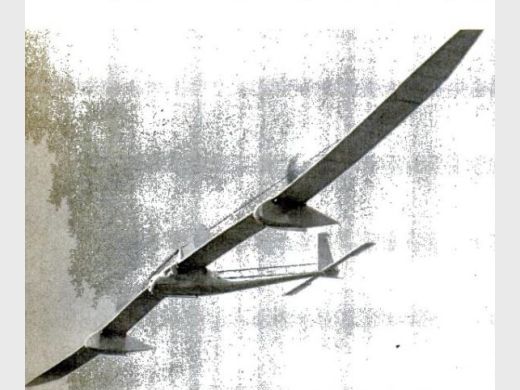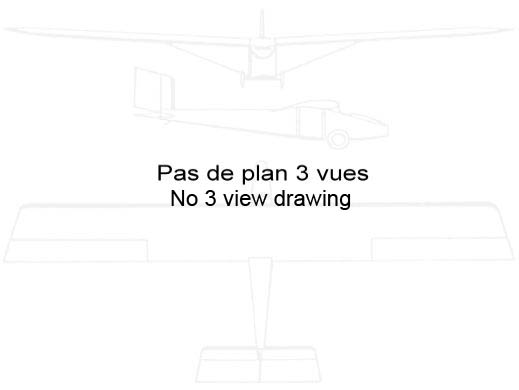
Cochkanoff
| DONNÉES GÉNÉRALES |
| Année du premier vol (ou de design, si seul projet) |
1974 |
| Pays | URSS |
| Designer(s) | COCHKANOFF |
| Premier constructeur | Projet non abouti |
| Type d'appareil | -- |
| Fonction | Expérimental |
| SPÉCIFICATIONS TECHNIQUES |
| Envergure | -- |
| Longueur | -- |
| Hauteur | -- |
| Allongement | -- |
| Surface alaire | -- |
| Profil aile | -- |
| Masse à vide | -- |
| Masse maxi | -- |
| Charge alaire | -- |
| Vitesse mini | -- |
| Vitesse maxi | -- |
| Finesse maxi | |
| Taux de chute mini | -- |
| Nb sièges | 7 |
| Structure | -- |
AUTRES INFORMATIONS
| Constructeur(s) |
| ||||||
| Infos techniques | -- | ||||||
| Histoire résumée | Projet d'appareil à 7 places initié en 1961 mais en 1974 la construction n'a pas pu démarrer faute de moyens financiers. Le projet semble avoir été abandonné à peu près à cette époque. Note datée de 1974 : According to Prof. Orest Cochkanoff, Dean of Engineering at Nova Scotia Technical College, a seven-man-powered aircraft could win the Kremer Prize. Basically a conventional monoplane, his MPA would have a 185-foot wingspan-only 10 feet less than that of the 747- and an empty weight of about 550 pounds. Cochkanoff’s optimization studies indicate that a seven-man crew gives the most favourable power-to-weight ratio for man-powered flight. Although expected to do some pedalling, the pilot would concentrate on flying the plane, while most of the work of driving the three pusher props would be done by six “galley slaves” pumping away to the rhythm of a beeper, its frequency governed by the pilot for thrust control. Two crewmen would be seated behind the pilot in the main fuselage, two in each of the two wing pods. Using a frozen lake as an “airport”, this plane, with skates for landing gear and a ground wheel with studs for traction on the ice, will take off easily in the dense, cold air of Nova Scotia winter. Flying 40 feet up, at a cruising speed of 25 mph, making long, slow turns around the pylons, the seven-seater would complete the Kremer figure-eight course in about 12 minutes. No sweat is estimated at only two hp. Over the past 13 years (donc depuis 1961), some two-dozen engineering students have worked with Cochkanoff on his pet project, and the design is now well developed. All that’s needed is about $40,000 to build the machine. | ||||||
| Liens personnalités | Pas de personnalité associée. |
SOURCES DOCUMENTAIRES
| Liens WEB | Pas de site référencé. |
| Livres | Pas de livre référencé. |
| Autres sources | «Who will take Aviation richest Prize ? » par Paul Wahl , Popular Science, février 1974 Article de 5 pages illustrées (en téléchargement sur Google Books) |

Team J2mcL © 2003 -
- Pages optimisées pour Mozilla Firefox

